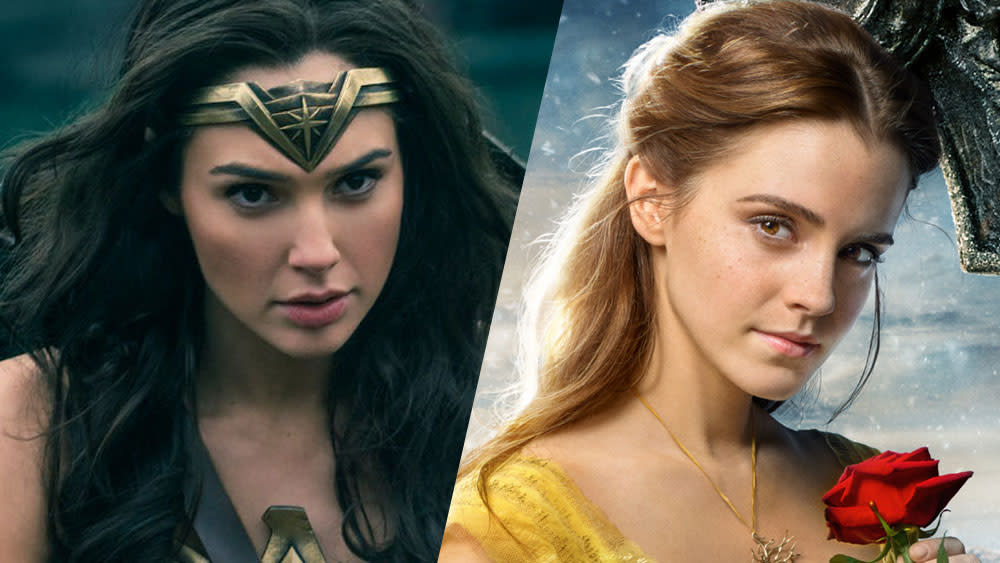Why ‘Wonder Woman’ and ‘Beauty and the Beast’ Should Lead to More Female-Centered Films

How has the box office loved “Wonder Woman?” Let us count the ways.
First, its opening weekend, which earned over $100 million in North America thanks in part to nearly universal support from the critical community. But that was just the beginning. Patty Jenkins’ movie went on to become the top earning live-action film directed by a woman, and passed earnings of its fellow DC Comics movies “Suicide Squad” and “Batman v Superman: Dawn of Justice.” It has experienced cultural victories too — look to the swarms of Comic-Con fans in full Diana Prince getups.
This weekend, with $389 million from the domestic market, “Wonder Woman” can add a new accomplishment to its arsenal — the highest-grossing movie of the summer.
It’s also the second largest earner of 2017 behind another film centered on a female protagonist, “Beauty and the Beast” ($504 million domestic). As conversation surrounding gender equality and equity in Hollywood reaches a fever pitch, the fact that these two films are leading the box office at the midway point hammer home a point that has been made before, but should be made again — female-led and centered films don’t just have a place in the marketplace, they’re key to the profit-making equation. But will Hollywood notice?
Recent studies hint … maybe.
There has been some progress toward making female protagonists more visible, according to a recent report from the Center for the Study of Women in Television and Film at San Diego State University. The study found that females made up 29% of protagonists in the 100 highest-grossing films of 2016, a 7% rise from 2015 and recent historical high. Still, that’s far from reflecting a demographic that makes up more than half of the population.
Hollywood’s gender issue is further complicated, though, when it comes to directors. The same institution released another recent report that found women made up only 7 percent of all directors working on the 250 highest-grossing domestic releases in 2016. That represented a decline of two percentage points from the year before.
And then there’s qualitative data. A survey from the Sundance Institute and Women in Film found women are far more likely to work in independent film than on mainstream studio movies. Of those surveyed, 44% said female directors are perceived to make films for a subset and/or less significant portion of the marketplace. Tell that to Patty Jenkins.
“Wonder Woman” and “Beauty and the Beast” may be two vasty different films, but that’s also part of the point — a movie with a woman or women at the center can and should be many different things. And even as women occupy space at the very top of the box office in recent years, there is plenty of room for more diversity. The women at the center of movies that have reached the top tier of box office success in recent years have been white, including Felicity Jones in “Rogue One: A Star Wars Story” and Jennifer Lawrence in the “Hunger Games” movies.
Even box office hits starring women of color, including last year’s “Hidden Figures” and this weekend’s “Girls Trip,” are made for much smaller budgets than those films that end up being the highest grossing of any given year. Hope for more intersectionality exists in the future, but the list of examples remains short.
One of the most exciting projects previewed at Disney’s D23 expo last weekend was Ava DuVernay’s big-budget adaptation of “A Wrinkle in Time,” which stars Oprah Winfrey, Reese Witherspoon, Mindy Kaling, and newcomer Storm Reid. On Sunday, DuVernay linked to an optimistic thread posted by Twitter-user Eric Huffman, that catalogues recent success of black women at the box office and potential for more in the future.
“I love that we’re able to witness this,” Huffman wrote. “I celebrate how far we’ve come. And I can’t wait to support all of these films and artists.”
Haters need threads too. This one's for them. The lovers already know. Thanks and props, @WorldwideHuff. https://t.co/FB2Hmxp4WC
— Ava DuVernay (@ava) July 23, 2017
Get more from Variety and Variety411: Follow us on Twitter, Facebook, Newsletter

 Yahoo Movies
Yahoo Movies 